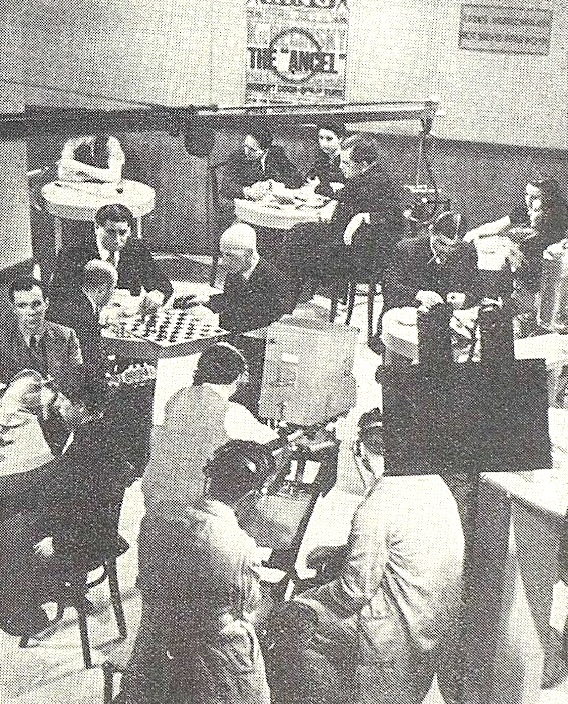OTD in early British television: 27 April 1939

John Wyver writes: ‘There were three, large, hearty failures in the television programmes last week and I propose to discuss them.’ That was how the splendid television critic for The Listener, Grace Wyndham Goldie, began her 27 April 1939 column which was headed ‘Sad Trio’. And I propose to feature excerpts from her discussion to illustrate and celebrate her writing.
Yes, I know that any service must have failures and that television, being a new service, must have more failures than most. And I realise that Alexandra Palace turns out at least twenty-five productions a week and that three misses out of twenty-fiveshots isn’t bad marksmanship. Why, then, dwell on the three and ignore the remaining twenty-two?
Because the ways in which these programmes failed are of the utmost importance to listeners and it is most necessary that we should differentiate between them. Programme A was a valuable experiment and the sort of thing we welcome even at the cost of failure. Programme B promised to be good but it misfired because of the way in which it was presented. Programme C was an earnest piece of unmitigated boredom and had, as far as l could see, no justification of any kind whatever.
Programme A was Soho, the production of which is shown above.
This was a television experiment in the kind of thing that in sound broadcasting is called a feature programme and in the cinema a ‘ documentary ‘ film. In other words it was a presentation of real life. In this case the life was a cafe in Soho where foreigners of all kinds, refugees, entertainers, actors, boxers and so on collect, eat macaroni, drink coffee, gossip and, apparently, in any spare moment play their national instrument.
Now the direct presentation of reality [that is, outside broadcasts] is obviously one of television’s biggest guns. To most people it is enormously interesting just to watch various kinds of life going on. And television has scarcely begun to touch the vast possibilities which lie simply in showing us the daily routine of London’s living. But Soho was an attempt to do something of this kind for a bit of London’s night-life.
The idea behind it was excellence itself. Select a cafe where interesting people meet, let the camera move from table to table and allow the microphone to overhear the conversations and viewers will feel that they are actually there coming into personal contact with these unusual personalities.
And an enormous amount of trouble was taken with all this. The whole cafe was reconstructed at Alexandra Palace; the cafe’s habitual patrons were taken there, and the conversations, quite obviously, were carefully rehearsed.
But did the result feel like direct experience? Alas, no! lt felt like the beginning of an indifferent film. One in which the camera moves from group to group until at last it comes to rest on the familiar features of James Cagney or Clark Gable and we know that the story is going to begin.
Only in Soho there was no story, no Cagney, no Gable and the characters, being untrained people trying to give performances as themselves, succeeded only for the most part in appearing to be inexperienced actors.
So Soho failed. lt failed because it lacked spontaneity, because it didn’t succeed in making the people in it seem real. But it was most worth doing because it was.an attempt to work out a technique for that new and important thing, television ‘documentary’.
Wyndham Goldie’s Failure B was Coliseum Night, which this blog considered recently. This failure was ‘much less comprehensible’. not least because the first OB from the variety theatre had, so the critic felt, been a success. The problem this time, however, was that
we so often saw the performers from the side. The result was that we got a ‘from the wings’ rather than a ‘from the audience’ outlook. With the result that we remained detached observers listening with amazement to the thunderous applause of those incomprehensible others.
Wyndham Goldie’s Failure C was From the Tree, a studio production which featured:
- Mary Field speaking on the value of trees to the film producer;
- Margaret Chataway, on the scientific value of wood;
- Marjorie Abbott demonstrating the use of wood in toy-making;
- Polly Hill Clarke with some of her sculptures; and
- Irma Bailey, in Tibetan costume, dancing two ‘wood dances’.
Our critic was underwhelmed:
This was a connected series of cultural talks by talented ladies about wood. What do I mean, wood? Why, WOOD. Trees are wood; there are many different kinds of wood with totally different cell structures and you can do fine sculpture in wood, like this, for instance. And so on for about half an evening’s programme, solid. educational, uplifting and DULL.
Leave a Reply